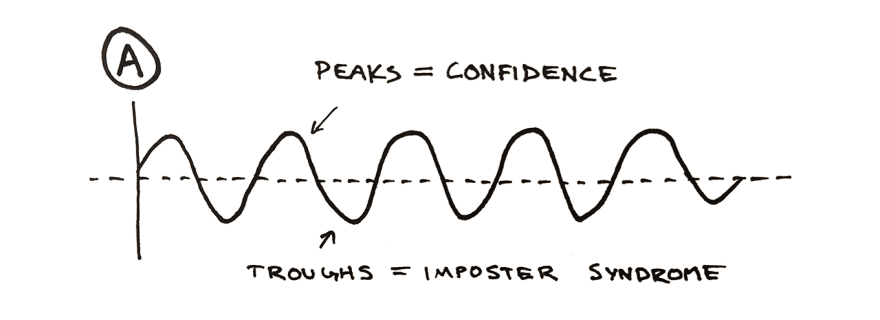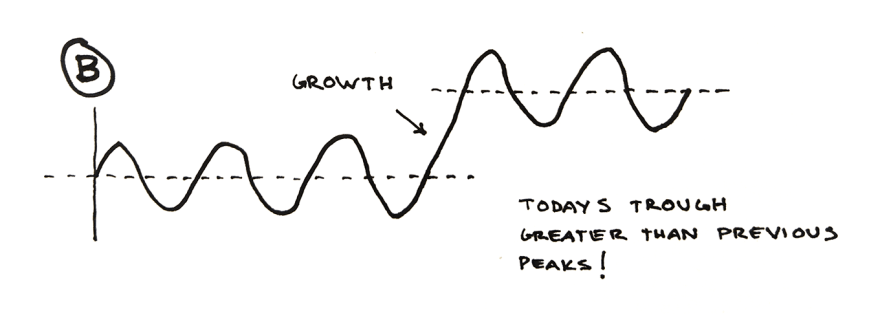Imposter syndrome is self-doubt, insecurity, and a lack of confidence to the point of feeling that I’m a fraud, having gotten to the point where I am through sheer luck, and soon to be found out.
The real downer about feeling this way is that I can feel it despite all the evidence counter to it.
And it’s not just me; it seems to be a common occurrence among my fellow software engineers. I think anyone going through change is likely to feel this way at least once in their life.
What I’ve Learned
Through my own experience, some coaching and mentorship, and conversations with others on this topic, I now understand that imposter syndrome can be cyclical for a lot of us. It comes and goes throughout our lives, more frequent for some and less for others. And there are a ton of strategies and tactics circulating the interwebs on ways to cope—not covering those here, sorry.
I also learned to pay more considerable attention to my confidence and moments of strength. I do have moments where I feel very confident, I do have it figured out, and I do deserve to be here. I know others can feel this way, as well.
And I’ve learned to visualize this cycle. I’m a creative who likes to distill things down to images; it makes things easier for me to wrap my head around, making it easier for me to explain things to others. For my imposter syndrome, I visualize my cycles as a sine wave.
Imposter Syndrome Sine Wave
Peaks and troughs represent confidence and imposter syndrome. I cycle between them over time, sometimes predictably.
Diagram A is how I visualize this. I keep this visual in my head and call upon it when I self-reflect and self-survey. And I acknowledge where I think I am on this wave.
I think this visual is also a measure of how in or out of my comfort zone I might be. When I’m at a peak, I’m usually doing what I know, what I’m good at, and doing things my way. And when I’m in the trough, I’m generally going through change, learning something new, or doing things someone else's way.
Another thing I look at when considering where I am on this wave is whether or not the peaks and troughs are higher or lower than previous ones. Or more accurately, am I in my comfort zone and stagnating or regressing? Or, am I getting outside of my comfort zone and growing?
Consider diagram B.
If I am embracing my confidence and impostor syndrome, and if I’m getting outside of my comfort zone and learning new things, today’s trough (point of imposter syndrome) may actually be elevated and higher than yesterday’s peak (point of confidence). Yup, I said it—if you are growing, what appear to be low points today are you existing on a new and elevated plane!
This visual, and what it implies, makes me feel damn good.
Follow me on Twitter - It's the best way to learn about any new content I publish.








Top comments (2)
Great read!
I often feel the same ways as you described at the beginning of your article, therefore it is rather easy for me to relate.
You have a rather interesting, but inspiring way of dealing with it!
I mean, developers and charts work perfectly together, don't they? ;)
Thank you Robin.
I do find many folks that can relate, and I think that makes it easier to cope with - it's normal. I agree that devs and charts (or any kind of diagram) do work perfectly together :)
There are studies that back up the idea that labeling, describing, and more clearly understanding an emotion makes it easier to deal with.